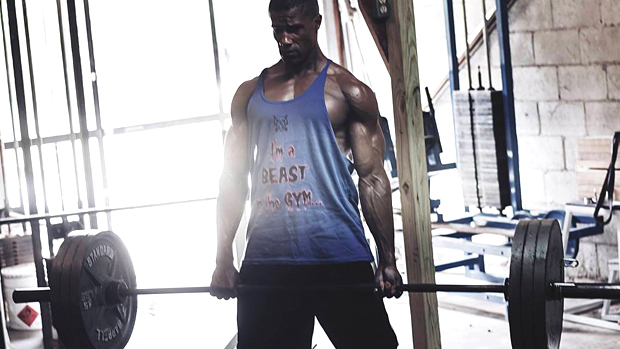Hitting the forearms indirectly with deadlifts and pulling movements might be enough for the genetically gifted, but those people are few and far between. For the rest of us, direct training is necessary if you want to avoid baby forearms.
But I Do Loaded Carries!
Loaded carries are great for grip strength, but they shouldn't be the go-to exercise for forearm training. Loaded carries are still an isometric exercise which essentially trains your forearms the same way as all the pull-ups, rows, and deadlifts that are already in your program. Dynamic contractions are necessary to maximize muscle adaptations (1).
Not to mention, dynamic contractions with both a concentric and eccentric tends to be more hypertrophic than isometric contractions (2,3). I mean, we would never recommend static biceps holds over biceps curls, so the same logic applies to forearms.
Here's the most complete forearm finisher you'll ever do:
The Two-Way Wrist Curl
Banded Version
- Set up a cable station or a band from a low angle.
- Curl your wrist in as you squeeze your forearm muscles on one side (forearm flexors).
- Then slowly unravel as you stretch your forearm flexors under load.
- That's only half of the movement. Next, you'll do the same thing, but to the opposite side of your forearm, which is often undertrained (extensors).
- Repeat this until your forearms feel like they're cramping on both sides.
Programming
Do these as a finisher at the end of any workout. They train two of the key forearm movements (flexion/extension) with a high tension stimulus. Go to failure on these for 3-4 sets of moderate to higher reps.
To progress these, simply add reps, weight, or stretch the band out further each time.
References
- K, Duchateau J;Hainaut. "Isometric or Dynamic Training: Differential Effects on Mechanical Properties of a Human Muscle." Journal of Applied Physiology: Respiratory, Environmental and Exercise Physiology, U.S. National Library of Medicine.
- Hather, B. M., et al. "Influence of Eccentric Actions on Skeletal Muscle Adaptations to Resistance Training." Wiley Online Library, John Wiley & Sons, Ltd, 8 Dec. 2008.
- ME, Hilliard-Robertson PC;Schneider SM;Bishop SL;Guilliams. "Strength Gains Following Different Combined Concentric and Eccentric Exercise Regimens." Aviation, Space, and Environmental Medicine, U.S. National Library of Medicine.





